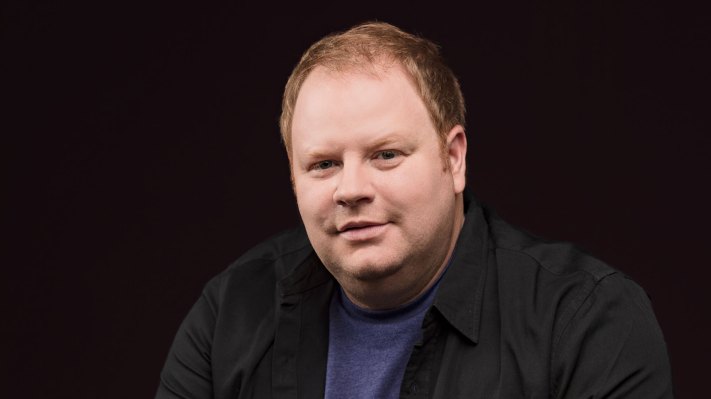Founded by entrepreneur Parker Conrad in 2013, the HR company Zenefits was quickly anointed one of the fast-growing companies in Silicon Valley, with a valuation that soared to $4.5 billion within three years. Then it began to fall apart. The company was discovered to face compliance issues. Conrad was forced to resign. And Zenefits’s valuation was slashed in half, with more than 60% of the company’s employees laid off over numerous rounds afterward.
If Conrad wallowed in self-pity afterward, he didn’t do it long. Within months of leaving Zenefits in 2016, he formed Rippling, a company originally focused on the process of onboarding employees but that has since come to manage all aspects of employee data, from payroll and benefits, to the apps employees use, to a device management platform that enables Rippling’s customers to retrieve, wipe clean and store employee computers when staffers part ways with a company.
In fact, there are now so many lines of revenue that Rippling just closed on $250 million in fresh funding led by Sequoia Capital Global Equities and Global Growth, with participation from earlier backers Greenoaks, Kleiner Perkins, Founders Fund, Initialized, YC and Threshold Ventures.
The round brings Rippling’s total funding to $450 million. It also values Rippling at $6.5 billion, making it more valuable than Zenefits ever was before it sold a controlling interest earlier this year to a private equity firm.
Conrad thinks it could easily grow from here. Asked if Rippling has received interest from an acquirer like, say Microsoft, he says the “right analog” for Rippling is Microsoft. “Our view is that Rippling is not just going to double in the future, but maybe grow by some much, much larger multiple over time.”
Conrad largely credits Rippling’s “compound” model, wherein instead of focusing narrowly on one smaller software sector, it has, from its outset, focused on growing numerous business lines simultaneously that share components and can be easily integrated.
It’s an approach that Rippling can execute by pulling founders into the fold, says Conrad, who offers that of Rippling’s now roughly 800 employees, 47 are former founders and many are in general manager type roles where they enjoy both financial security and the autonomy that they cherish.
(They build new business lines in-house; Rippling isn’t an acquisitive outfit, Conrad makes clear.)
That compound approach also enables Rippling to sell a bundled system of its offerings to customers on a mostly per-seat basis. And it means more diversified revenue, which is something that investors, such as Sequoia, like to see.
It’s all beginning to add up, according to Conrad. He says that Rippling — which sells to teams as small as two people and as large as 1,000-plus — has more than doubled its number of customers over the last year and that it now enjoys 2.7 times the annual recurring revenue it saw a year ago, though he declines to be more specific about actual figures.
Explains Conrad: “I made that mistake the last time around [at Zenefits], and I predicted where our revenue was gonna go, and then we didn’t get there.”
As for how investors arrived at that $6.5 billion figure exactly, Conrad figuratively throws up his hands. “Man, you’re asking the wrong person. I see one deal every two years, which is the fundraising that we do as a company, [whereas] I know that investors are seeing multiple deals a week.
“What I want to do,” he says, “is just go out and put our best foot forward in a fundraising process. I studiously never have an opinion about what the price of the company should be and [instead] let investors tell me what they think is a fair price.”
For readers looking to understand how the company is built differently than was Zenefits in its earliest years, Conrad says they are nearly exact opposites from a foundation perspective.
“The biggest mistake that we made at Zenefits was that it was almost too easy for us to close customers early on, and that led to this fear that the biggest risk that we faced was that other companies were going to swoop in, and so that what we needed to do is just take all of the oxygen out of the room.”
Conrad believed at the time that “at some level of scale, there would be network effects in the business,” and to get large, fast, the company should handle administrative work for its clients internally with an eye toward automating those processes afterward.
But “it’s much harder to automate a process once you’ve scaled it out,” says Conrad now. In short order, “because we were doing [a lot] manually, we were upside down from a gross margin perspective . . . and that’s when a lot of things started to come apart.”
He apparently wasn’t about to repeat that mistake at Rippling, where 40% of employees are engineers, he says. At Rippling, “We just had this absolute prohibition on any in-house manual [work] for the longest time. There wasn’t even customer support. I was personally doing — and the engineering team was personally doing — all of the customer support until [we’d generated] several million dollars in ARR.”
It meant that for the first two years, Rippling was “basically me and like 50 engineers,” he says. “But what we built was really software, and it makes for a much better, much more robust product, and we’re now way out on the other extreme of the distribution of SaaS companies, where we’re just relentless about pruning any operational function and trying to replace it with software.
“Ultimately,” he says, “it’s a much more robust place to be from a product perspective.”
